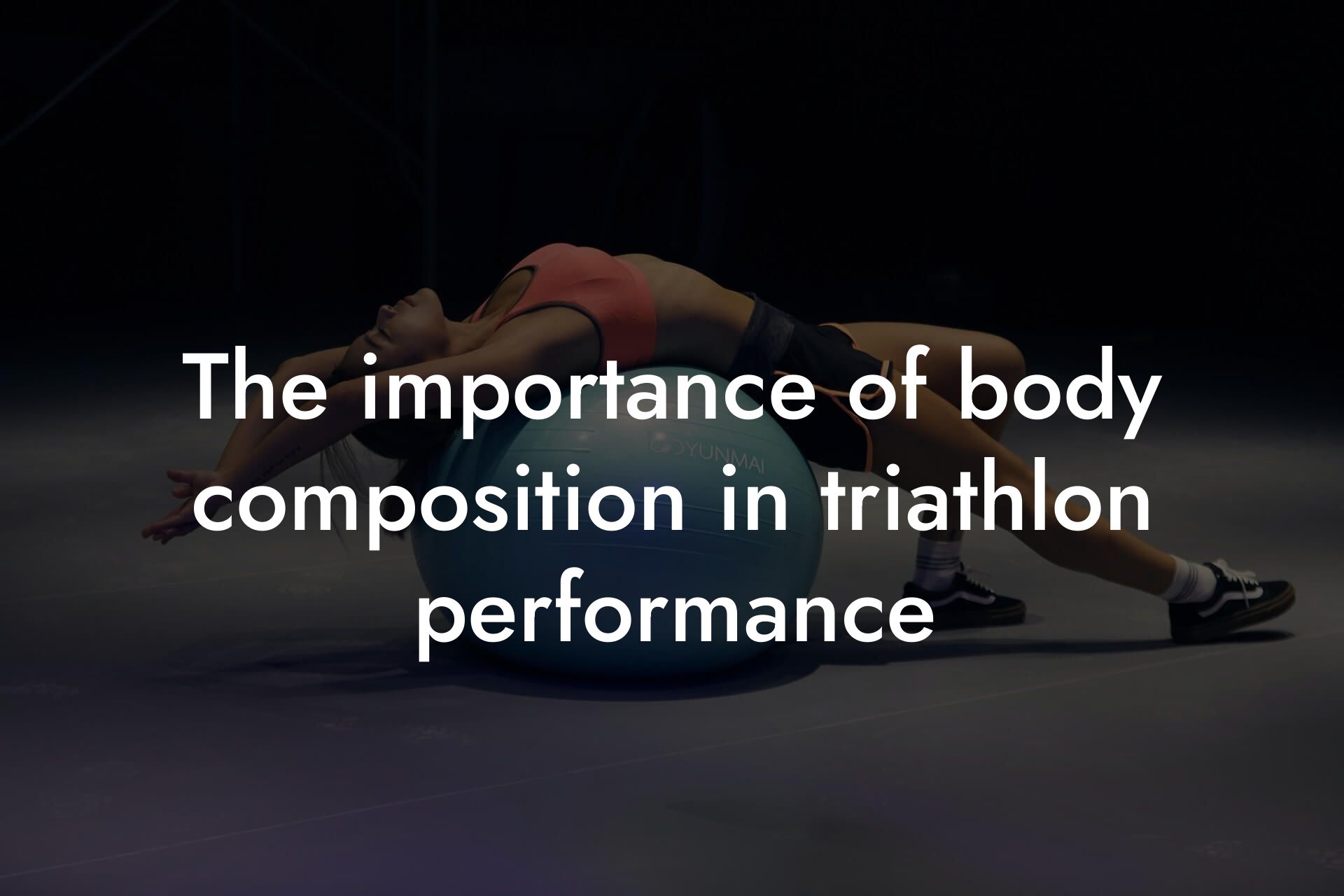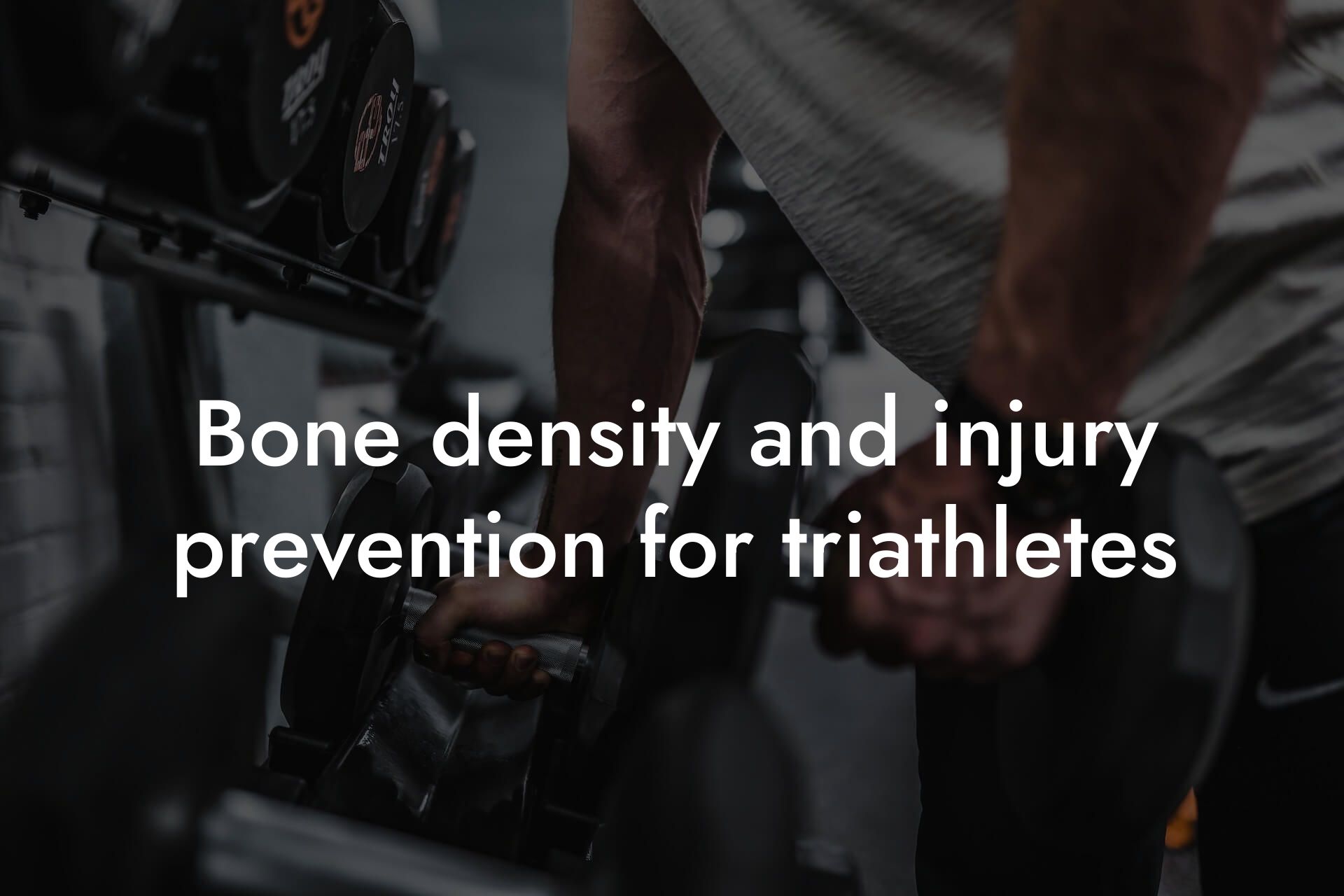As a triathlete, you're no stranger to the demands of endurance training. However, incorporating strength training into your regimen can be a game-changer for your overall performance. At Tano Performance Group, we understand the importance of a well-rounded fitness approach, which is why we're excited to share this comprehensive guide on strength training for triathletes.
Table of Contents
- Why Strength Training Matters for Triathletes
- Benefits of Strength Training for Triathletes
- Key Muscle Groups for Triathletes
- Strength Training Exercises for Triathletes
- Creating a Strength Training Program for Triathletes
- Common Mistakes Triathletes Make with Strength Training
- Measuring Progress and Avoiding Plateaus
- Frequently Asked Questions
Why Strength Training Matters for Triathletes
Triathlon training typically focuses on cardiovascular endurance, but neglecting strength training can lead to imbalances, injuries, and plateaus. Strength training improves muscular power, speed, and efficiency, allowing you to maintain a strong pace throughout your swim, bike, and run segments. It also enhances your overall athleticism, reducing your risk of injury and improving your resilience to fatigue.
Benefits of Strength Training for Triathletes
When incorporated correctly, strength training can bring numerous benefits to triathletes, including:
• Enhanced muscular endurance: Strength training increases your muscles' ability to sustain effort over time, delaying fatigue and improving overall performance.
• Increased power and speed: By building explosive strength, you'll be able to generate more power and speed during your swim, bike, and run segments.
• Improved running economy: Strength training can help you maintain good running form, reducing your energy expenditure and improving your overall running efficiency.
• Enhanced cycling performance: Stronger legs and core muscles enable you to maintain a higher cadence and generate more power on the bike.
• Better swimming technique: Strengthening your upper body and core improves your swimming efficiency, reducing drag and increasing your speed through the water.
Key Muscle Groups for Triathletes
To optimize your strength training, focus on the following key muscle groups:
• Legs: Quadriceps, hamstrings, glutes, and calves are essential for running and cycling.
• Core: Strengthening your core muscles, including your abs, obliques, and lower back, improves your stability, balance, and overall athletic performance.
• Upper Body: Focus on your shoulders, back, and arms to enhance your swimming technique and overall upper body strength.
Strength Training Exercises for Triathletes
Incorporate the following exercises into your strength training routine:
• Squats: Works your legs, glutes, and core.
• Lunges: Targets your legs, glutes, and hips.
• Deadlifts: Engages your legs, glutes, back, and core.
• Leg Press: Isolates your legs and glutes.
• Planks: Strengthens your core and improves your overall stability.
• Pull-ups: Targets your upper body, including your back, shoulders, and arms.
• Dumbbell rows: Works your upper body, focusing on your back and arms.
Creating a Strength Training Program for Triathletes
To develop an effective strength training program, consider the following:
• Periodization: Divide your training into specific periods, focusing on different muscle groups and exercises to avoid plateaus.
• Progressive Overload: Gradually increase the weight, reps, or sets over time to continue challenging your muscles.
• Incorporate plyometrics and explosive exercises: Incorporate exercises like box jumps and medicine ball throws to improve your power and speed.
• Make it specific: Tailor your strength training program to your specific triathlon goals and weaknesses.
Common Mistakes Triathletes Make with Strength Training
Avoid these common mistakes to get the most out of your strength training:
• Neglecting proper form and technique: Focus on proper form and technique to avoid injuries and ensure you're targeting the correct muscle groups.
• Overdoing it: Don't sacrifice your endurance training for strength training; find a balance that works for you.
• Not incorporating functional exercises: Focus on exercises that mimic triathlon movements, such as running and cycling, to improve your overall athleticism.
Measuring Progress and Avoiding Plateaus
To ensure you're making progress and avoiding plateaus, track the following:
• Strength gains: Monitor your weight, reps, and sets to track your progress.
• Body composition: Use a DEXA scan, like the one offered at Tano Performance Group, to track changes in your body fat percentage, lean mass, and bone density.
• Performance metrics: Monitor your swim, bike, and run times, as well as your overall triathlon performance, to see how strength training is impacting your endurance.
By incorporating strength training into your triathlon regimen, you'll unlock a new level of performance and athleticism. Remember to focus on key muscle groups, incorporate functional exercises, and track your progress to avoid plateaus. At Tano Performance Group, we're committed to helping high-earning professionals like you achieve their fitness goals. Take the first step towards optimizing your performance with a comprehensive DEXA scan and personalized coaching.
Frequently Asked Questions
What is strength training, and how does it benefit triathletes?
Strength training is a type of physical training that focuses on building muscle mass and bone density through resistance exercises. For triathletes, strength training is essential to improve overall performance by increasing power, speed, and endurance. It also helps to prevent injuries, enhances running efficiency, and boosts cycling power.
How does strength training improve running efficiency?
Strength training targets the muscles used in running, such as the legs, glutes, and core. By strengthening these muscles, triathletes can improve their running form, increase their stride length, and reduce their risk of injury. This leads to more efficient running and better overall performance.
What are the key muscle groups that triathletes should focus on in strength training?
The key muscle groups that triathletes should focus on in strength training are the legs, glutes, core, and upper body. The legs and glutes are essential for power and speed, while the core provides stability and endurance. The upper body, including the shoulders and back, helps with swimming and cycling efficiency.
How often should triathletes incorporate strength training into their workout routine?
Triathletes should aim to incorporate strength training into their workout routine 2-3 times per week, with at least one day of rest in between. This allows for adequate recovery time and ensures that strength training does not interfere with other forms of training, such as swimming, cycling, and running.
What types of exercises are best for triathletes in strength training?
Triathletes should focus on exercises that work multiple muscle groups at once, such as squats, lunges, deadlifts, and step-ups. These exercises help to improve functional strength, power, and endurance. Additionally, exercises that target the core, such as planks and Russian twists, are essential for stability and balance.
Can strength training help to improve my swimming performance?
Yes, strength training can help to improve swimming performance by increasing power, speed, and endurance. Targeting the muscles used in swimming, such as the shoulders, back, and core, can help triathletes to maintain a strong and efficient stroke, even during long swims.
How does strength training impact bone density, and why is this important for triathletes?
Strength training helps to improve bone density by stimulating the growth of new bone tissue. This is especially important for triathletes, as they are at a higher risk of osteoporosis and fractures due to the repetitive impact of running and cycling. Improved bone density reduces the risk of injury and enhances overall performance.
What is the best way to incorporate strength training into a busy schedule?
The best way to incorporate strength training into a busy schedule is to prioritize it and make it a non-negotiable part of your workout routine. Try to schedule strength training sessions at the same time every week, and consider working with a personal trainer or coach to develop a customized training plan.
Can strength training help to reduce my body fat percentage?
Yes, strength training can help to reduce body fat percentage by increasing muscle mass and boosting metabolism. As muscle mass increases, the body burns more calories at rest, leading to weight loss and improved body composition.
How does strength training impact my physique, and what changes can I expect to see?
Strength training can help to improve physique by increasing muscle mass, reducing body fat percentage, and enhancing overall muscle tone. Triathletes can expect to see improvements in their overall shape, with a more defined and athletic physique.
What are some common mistakes that triathletes make in strength training, and how can I avoid them?
Common mistakes that triathletes make in strength training include overtraining, poor form, and neglecting to warm up and cool down. To avoid these mistakes, triathletes should focus on proper form and technique, start with lighter weights and gradually increase the load, and prioritize rest and recovery.
How can I measure the effectiveness of my strength training program?
Triathletes can measure the effectiveness of their strength training program by tracking changes in their performance, such as increased power, speed, and endurance. They can also track changes in their body composition, such as reduced body fat percentage and increased muscle mass.
What role does nutrition play in strength training for triathletes?
Nutrition plays a critical role in strength training for triathletes, as it provides the necessary fuel for muscle growth and recovery. Triathletes should focus on consuming a balanced diet that includes plenty of protein, complex carbohydrates, and healthy fats, and should prioritize post-workout nutrition to aid in recovery.
How can I incorporate strength training into my training plan during the off-season?
The off-season is an ideal time to focus on strength training, as it allows triathletes to build a strong foundation of strength and endurance. Triathletes should aim to incorporate strength training into their workout routine 2-3 times per week, and should focus on exercises that target multiple muscle groups at once.
What are some common strength training exercises that triathletes should avoid?
Triathletes should avoid strength training exercises that are high-impact or high-risk, such as heavy overhead lifting or deep squats. They should also avoid exercises that target single muscle groups, such as bicep curls, and instead focus on exercises that work multiple muscle groups at once.
How can I modify my strength training program as I get closer to a competition?
As triathletes get closer to a competition, they should modify their strength training program to focus on maintenance and active recovery. This can include reducing the intensity and volume of strength training, and incorporating more stretching and foam rolling to aid in recovery.
What role does recovery play in strength training for triathletes?
Recovery plays a critical role in strength training for triathletes, as it allows the muscles to repair and rebuild. Triathletes should prioritize rest and recovery, including activities such as stretching, foam rolling, and self-myofascial release, to aid in muscle recovery and reduce the risk of injury.
How can I incorporate strength training into my training plan if I'm a beginner?
Beginner triathletes should start with light weights and gradually increase the load as they build strength and endurance. They should also focus on exercises that target multiple muscle groups at once, and should prioritize proper form and technique.
What are some common strength training myths that triathletes should be aware of?
Common strength training myths that triathletes should be aware of include the idea that strength training will make them bulky or slow, or that it's only necessary for elite athletes. In reality, strength training is essential for all triathletes, regardless of level or goal, and can help to improve overall performance and reduce the risk of injury.
How can I find a qualified strength training coach or personal trainer?
Triathletes can find a qualified strength training coach or personal trainer by researching local gyms and training studios, asking for referrals from friends or fellow athletes, or searching online for certified professionals. They should look for coaches or trainers who have experience working with triathletes and who can develop a customized training plan to meet their specific needs and goals.
What are some common injuries that triathletes can experience as a result of poor strength training?
Common injuries that triathletes can experience as a result of poor strength training include muscle strains, tendonitis, and stress fractures. These injuries can be prevented by prioritizing proper form and technique, starting with light weights and gradually increasing the load, and incorporating rest and recovery into the training plan.
How can I stay motivated and consistent with my strength training program?
Triathletes can stay motivated and consistent with their strength training program by setting specific and achievable goals, tracking their progress, and finding a workout buddy or accountability partner. They should also prioritize rest and recovery, and reward themselves for milestones achieved.
What are some common strength training exercises that triathletes can do at home?
Triathletes can do a variety of strength training exercises at home, including bodyweight exercises such as push-ups, squats, and lunges, as well as exercises that use resistance bands or light weights. They can also incorporate plyometric exercises, such as jump squats and box jumps, to improve power and explosiveness.
How can I incorporate strength training into my training plan if I have a limited budget?
Triathletes can incorporate strength training into their training plan on a limited budget by focusing on bodyweight exercises, using resistance bands or light weights, and incorporating plyometric exercises. They can also consider working with a coach or trainer who can develop a customized training plan that meets their specific needs and goals.
Here are some related articles you might love...
- The importance of body composition in triathlon performance
- Using DEXA scans to monitor triathlete health
- Bone density and injury prevention for triathletes
- Recovery techniques for triathletes after races
- Balancing training for swimming, cycling, and running
- Nutrition strategies for triathlon training and competition
- Off-season training strategies for triathletes
- The role of lean muscle mass in triathlon events
- Reducing body fat for better endurance in triathlons
Zak Faulkner
Zak Faulkner is a leading authority in the realm of physical health and body composition analysis, with over 15 years of experience helping professionals optimise their fitness and well-being. As one the experts behind Tano Performance Group, Zak has dedicated his career to providing in-depth, science-backed insights that empower clients to elevate their physical performance and overall health.
With extensive knowledge of DEXA technology, Zak specializes in delivering comprehensive body assessments that offer precise data on body fat, muscle mass, bone density, and overall physique. His expertise enables individuals to make informed decisions and achieve their fitness goals with accuracy and confidence. Zak’s approach is rooted in a deep understanding of human physiology, combined with a passion for helping clients unlock their full potential through personalised strategies.
Over the years, Zak has earned a reputation for his commitment to excellence, precision, and client-focused service. His guidance is trusted by top professionals who demand the best when it comes to their health. Whether advising on fitness programs, nutritional strategies, or long-term wellness plans, Zak Faulkner’s insights are a valuable resource for anyone serious about taking their health and fitness to the next level.
At Tano Performance Group, Zak continues to lead our Content Team revolutionising how professionals approach their physical health, offering unparalleled expertise that drives real results.




